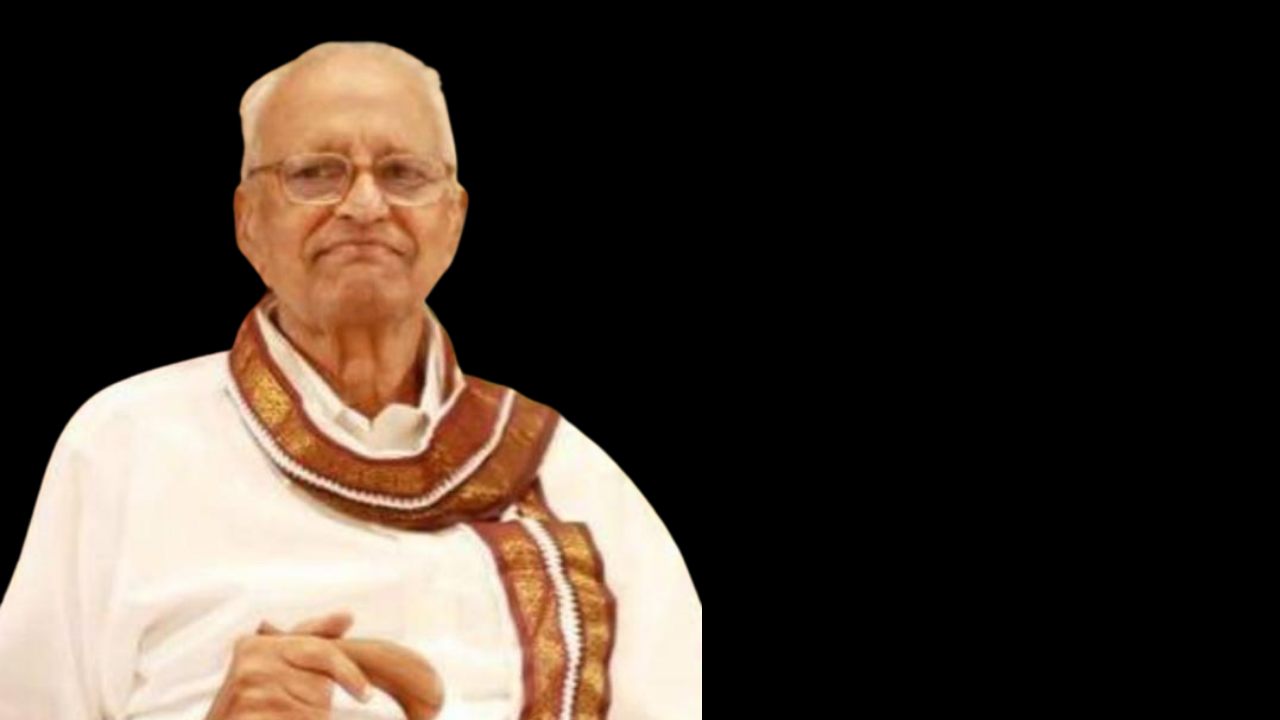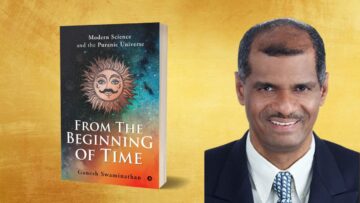Tenali is a small city in the Guntur district of Andhra Pradesh. It is only small in size. The town continues to live in our consciousness for more than one reason. Not in small measure for being the birthplace of Tenali Ramakrishna, one of the Ashta Diggajas of Sri Krishnadevaraya. Situated on the banks of the River Krishna, Tenali is an ancient place. It finds mention in the Andhra-Satavahana Kingdom relics. The Nagalingeshwara Temple inscription of Tenali shows a rich Vedic-Jain-Buddhist history for the place going back to 2000 years. In the modern era too, Tenali as a town is known for Art, Literature and Culture. But that is not everything. This story is about a tradition, culture and a person who should have been an inspiration for many in the nation, only if we cared to know the man and the institution. It is a one-man Institution that he has held fort in the midst of all turmoil.
The Tenali Pareeksha
The Year was 1991. There were just 4 Gurus who could authoritatively teach Advaita Siddhi (Brahmanandeeyam). All were aged more than 75. It was the same situation with other Shastras. This troubled Sri Sarma-garu. Who in the coming decades would continue this tradition? Is yet another line of traditional scholarship going to end? Was the future going to be bereft of the longstanding ancient scholarship? When the living scholarship vanishes, it requires higher order enlightenment for a revival through texts directly. Sarma-garu was not willing to give this up so easily. He had decided that he is going to stand for the scholarship that he saw in this lifetime. He would carry this on his shoulders as long as he can and keep the tradition alive. He did and he continues to do so. What is this tradition that he stood for?
He established the Advaita Siddhi Shastra Poshaka Sabha in the name of his Paramaguru, Shiva Sundara Sadguru, in this centenary year – 1991. Thus, began the journey of creating advanced scholarship in the Advaita Siddhi (Brahmanandeeyam). However, that was one of the many Shastras. What about others? With the mere financial support, only so much was possible. A divine intervention came in the form of Sri Venkateshwarulu. One of the Pandits, who regularly attended the Shastra Poshaka Sabha sessions presented the invitation pamphlet to Sri Venkateswarulu, Managing Director of Kakatiya Cement. A great Dharmika, he attended the session. He saw Sarma-garu and enquired about his association with the Sabha and the purpose. Sarma-garu explained the limited nature of the Shastra support possible then with mere funds.
There is a difference between this scholarship and other traditional schools. This was not equivalent to taking in students at the beginning level and transforming them into practising scholars. This was about transforming practising scholars into outstanding representatives of the tradition and realizing Guru-s out of them. This meant that few were eligible to even seek the final status. It required one to have a first level scholarship in the 6 Darshanas (Sankhya, Yoga, Nyaya, Vaisheshika, Meemamsa, Vedanta) and 6 Vedangas (Shiksha, Chandas, Vyakarana, Nirukta, Kalpa, Jyotisha). This had to be followed by years of practice. It needed enough Guru-s who had the authority to certify those who aspire to reach this level. And we had just 4 of them who could teach Advaita Siddhi (Brahmanandeeyam) in the year 1991. Sri Venkateswarulu pledged to spend INR 12L that year if Sarma-garu were to be with him. Thus, the stage was set up for the establishment of the Tenali Pareeksha. The aim was to prepare 10 practitioners as students and guide them to graduate as Guru-s in the Advaita Vedanta.
Setting up of an Institution on the Lines of a Gurukula
Sarma-garu now set out to prepare a detailed syllabus. He took 2 months, met various Pandits and prepared a detailed course syllabus, along with rules and regulations to run the institution. In the meanwhile, administrators of the Sringeri Sharada Peetha had met Sri. Venkateswarulu to seek his support to further the cause of the Shastras. A culmination of all this was the Tenali Shastra Poshaka Sabha with the blessings and cultural patronage of the Shastra Poshaka Sabha of the Sringeri Sharada Peetha. Sarma-garu would be the Administrator. Jagadguru Sringeri Shankaracharya blessed the program as the Academic Advisor. Sri Venkateswarulu would provide the financial support. Six students in each of the 4 Shastras enrolled forming the first batch of 24 students. Thus, a branch of scholarship that may have dried began to regain its flow.
At this stage, it is important to reflect upon the richness of our tradition and what we have lost over the last few hundred years. The Mahabhashya of Patanjali refers to 21 Rig Veda Shakhas, 101 Yajurveda Shakhas, numerous Sama Veda Shakhas and 9 Atharvana Veda Shakhas. However, all put together we do not have more than 20 Veda Shakhas that have survived today. Both the living scholarship and exclusive scriptures associated with them are completely lost and we do not have any means of reviving them. We also do not have the names of all those Shakhas. This underscores the importance of ensuring that every living tradition survives, thrives and glows our lives.
Then came the question of where to invest and grow these institutions. Are we to build classrooms where Shastragna-s (that is how the Shastric scholars are referred to) and Guru-s stay and learn? Should the investment go towards copies of scriptures? Sarma-garu answered this question in the way the tradition has always answered. The Vedic Parampara always grew with the Acharyas and in their homes. Ours has been largely a Grihasthashrama Parampara and a living tradition. It is best represented by the practitioners. Their thriving ensures that the tradition survives. Hence, he sought that the greatest component of investment should be in the form of ‘honorarium’ for the aspiring scholars. Those aspiring to reach the pinnacle ought to be supported in their sustenance. Investment was required only in the promotion of the Shastras. Funds ought to be spent in supporting those willing to go the long journey of studying them in the strict Gurukula system. Sri Venkateswarulu saw reason and accepted.
Sarma-garu designed the program based on Pareekshas every Semester. The Tarka program was designed as a 6 years program. Vyakarana and Meemamsa for 7 years. The Vedanta course was for 6.5 years. Shadanga sahita Vedabhaashya for 6.5 years. Advaita Siddhi (Brahmanandeeyam) 2 years. Mahabhashyam (Pradeepodyota Sahitam) Ashtadhyayi for 3 years. After the Shastragna-s were thoroughly tested through the Semester Pareekshas they were taken to Sringeri Jagadguru for a Final Viva Pareeksha completely sponsored by the centuries old institution. A successful completion at Sringeri earned them a Pramanapatra and the traditional Red-Shawl Sanmana. Thus, the program ran smoothly until the year 2006 under the aegis of the Sringeri Matha and the sponsorship of Sri. Venkateswarulu.
Then came another bend in the journey of the Tenali Pareeksha. Sri Venkateswarulu established a Vedic Institute in Hyderabad. All his investments were centred around the institution. He expressed his inability to continue sponsorship for the Pareeksha. While the number of Shastragna Guru-s created were a handful, the Pareeksha had kept the tradition alive. Now, it faced another challenge. For a while, it seemed as though no help would come from any quarters but soon it did. Jagadguru Kanchi Shankaracharya Swamiji was once at Tirupati for his Chaturmasya. Sarma-garu sought an audience and presented the program. Swamiji was pleased and extended support for the Tenali Pareeksha. Sarma-garu heaved a sigh of relief.
Sarma-garu worked towards making the program aspirational, tirelessly. Around 2015, Sarma-garu met Shri. Harikiran Vadlamani – Founder of Indic Academy. Ever since, Indic Academy has been associated with the Tenali Pareeksha in different ways, providing scholarship support to 50 students and building visibility in the larger Astika Samaja to this unique model for the preservation and study of Shastras.
The Tradition Grows like a Tree
A sneak peek into what the program has achieved shows the rigour involved and the importance it has assumed. So far, 80 Shastragna Guru-s have graduated. The importance of this number should be seen in that they would be teaching many more scholars at the next level, some of whom would aspire to achieve the Tenali Pareeksha in the future. 7 of them have achieved the coveted Sandipani Puraskar for the Yuva Shastragnas. Two Guru-s have been honoured with the President’s award for elderly scholars aged 60+. Where we had 4 Gurus in 1991 in the subject of Advaita Siddhi, today we have 11 of them. 130 scholars are now registered under the program from all over the country. 90% of our Guru-s in the country, who have the authority to teach these subjects, come from the Tenali Pareeksha. Scholarship is multiplying through the students studying under them. Such has been the achievement, and such is the importance of the Tenali Pareeksha. It is now an aspirational program in the country. This achievement has not been easy. The rigour of the program resulted in a lot of drop out in the initial years. This resulted in stipend investment not resulting in desired benefits. Sarma-garu was quick enough to restructure the stipend program so that they received it only upon completing milestones/program. He built an incentive for reaching specific targets. The results of these efforts can be seen in these numbers.
The Institution has had its moments when it was in the National news. Shri Priyavrata, son of Smt. Aparna and Shri Devadatta Patil, became the youngest at the age of 16 years to clear the Tenali Pareeksha in the Vyakarana Granthas. This 14-stepped Pareeksha is considered difficult by seasoned scholars who are 40-50 years. The stupendous achievement caught the imagination of the entire nation as well as the Prime Minister Shri Narendra Modi. He publicly congratulated Shri Priyavrata on the Social Media and made the entire country turn towards the Tenali Pareeksha for a few moments. The larger Society only needs to continue this gaze and enable greater sustenance of the institution for the benefit of the times to come.
Until now, examinations were conducted at Tenali. With Covid, new challenges came. Examinations were postponed in the year 2020. It was specially conducted for two shastragnas in their final semester in December 2020. Although the March 2021 examination was conducted, it was postponed again from June to December. Sarma-garu decentralized the Pareeksha so that the scholars did not have to travel far and wide. Pareekshas are now conducted at Goa, Bangalore, Hyderabad, Tirupati and Chennai. Every centre now has approximately 25 students registered.
The Importance for Our Times
The question then is – what is the importance of this scholarship for the country in these times. Why are we striving for these institutions to survive and thrive? Are we merely emotionally attached with this knowledge or is there something more? What is the relevance of this knowledge in these times for us as individuals and the civilization? What problems are they going to resolve for us?
At one level, it is quite unfortunate that we have to answer these questions. Answers should have been obvious, but it is important that we answer them in sufficient measure. It ought to be answered at two levels. Firstly, this is the knowledge that shaped every aspect of our civilization which thrived for a few thousand years, until we faced the onslaught of Modernity. The very fact that it has shaped a civilization differently that sustained greatly for a few millennia should make it extremely valuable for not just Bharatiyas but the whole of humanity. Civilizationally, of course, it is more important for Bharatavarsha. However, we do not have to approach the problem with a mere sense of history. This is not a piece of knowledge for the museum, to be kept alive minimally. The perspective of life embedded in these Shastras offer an entirely different perspective, instruments and methodologies for life that can contain the excesses of modern life and redirect humanity in a more sustainable and healthy direction. That, of course, is another discussion and is the endeavour of Indic Academy through all its institutions. The relevance of Yoga and Advaita for humanity is now well acknowledged and recorded. However, Meemamsa, Tarka, Nyaya, Vyakarana continue to be sophisticated achievements of Bharatiya Parampara that have applications in corresponding fields in our modern life. It is essential that this tradition is kept alive, over a period scaled and made accessible by the larger India, if not humanity. It is also necessary that these disciplines are kept alive according to Tradition. This tradition has significantly suffered distortion in the colonial era. Forces rooted in the colonial powers continue to distort it. They need ring fencing to protect themselves and keep the ability to throw sustainable solutions to modern problems.
The Future
Sarma-garu is that one-man army running the Tenali Pareeksha through his large network. The river of traditional scholarship flows from the past into the future under his nurturing watch. Of course, he is supported by the Astika Mahajanas and the Shastragna-s. Difficulties have not discouraged him. He has now started a new Shrouta Shastra-gna program that is different from the Paurohitya. It consists of 3 Kandas (Adhvaryava, Hotru and Oudgatru) and for now he has started with the Adhvaryava Kanda. The Hindu society supports Purohitas in some form through various ceremonies and festivals that are integrated into the daily life of the Grihastha-s. However, the Shrouta Snataka is very different. We today have old practitioners who have the authority to be the Guru-s. However, there isn’t enough interest yet as there is no definite income associated with it to sustain daily life. The larger society has lost its ability to appreciate the importance of the Shrauta Yagnas and the need for their performance. Shastragna-s aspiring to perform the same must be supported and sustained by the society. However, Sarma-garu is determined to review the tradition and make it sustainable. Since the last 2 years the program has been running. 3 Kandas take around 12 years to complete. After the institutionalization and establishment of the Adhvaryava Kanda, the others would be considered. Some men make a difference, even when they are just alone. Through their force, they draw other Dharmikas towards them and together they uplift the Dharma. Sarma-garu has now drawn many such Dharmikas to support the cause.
The Tradition Continues to Flow, Like a Quiet River
In all these years, Sarma-garu has anchored the institution around making it aspirational. Shastragnas today seek pride in clearing the Tenali Pareeksha. It is respected as an advanced qualification for students in all Universities. The honorarium has only been one of the enablers. A private institution can only offer a minimal honorarium. Its success depends only on the value it creates for the aspirants and the society. It is only the Government which has the means to invest and scale further. Thus, the Tenali Pareeksha runs in the time-tested tradition of the ancient Gurukula system.
“The graduating students are teaching various students. The fraternity is multiplying through them” says Bhagavatula Anjaneya Sarma-garu. He has aged but just physically. The commitment, the energy and the Sankalpa has not reduced one bit. Hardships have not brought down the zeal anyway. “We must strive to further the Sanatana Bharateeya Samskruti. Bharateeya Vignana is in the Vedas, and it is the Shastras that support the Vedas. We need the Shastras to understand the Vedas. Vedas proclaim ‘Satyam Gnanam Amrutam Brahma’. However, to understand what Satyam, Gnanam, Amtruam mean you need the Shastras. Veda Pramana is supported by the Shastras”. Thus, Sarma-garu establishes the criticality of the Shastras. Our Civilization is different because of the Vedas. Its knowledge is exclusive. It is our age old Shastras that establishes ways, means and instruments to understand and realize this knowledge. Hence, it is very essential to keep this scholarship alive at all times. Our destiny is different from other civilizations. Our paths must be lit by the Vedas and the Shastras.
“All success comes from Anjaneya Swami, my Kuladevata”, Sarma-garu quietly offers everything at his lotus feet. “It is only by his Sankalpa that things happen, things flow into me and to the Astika Mahajanas”. It is an authentic humility that comes from knowing the importance and enormity of the cause. In a simple conversation with Sarma-garu, one never realizes that one is speaking to a one-man institution of such importance and achievement. “It is through the support of the Astika Mahajanas that the Amrita of the Shastra-s continue to flow in the society” – Sarma-garu ends underscoring the importance of the role played by the larger society.
It is also a quiet call to all of us to raise to the occasion and listen to the greater call of our civilization.
Justice Pamidighantam Kodandaramayya Foundation (JPK Foundation) Support for the Year 21-22
Indic Academy is pleased to be associated with Sri Bhagavatula Anjaneya Sarma garu and the Tenali Pareekshafor the last 6 years by providing annual scholarship grants to 50 students. This year, Indic Academy requested the Justice Pamidighantam Kodandaramayya Foundation (JPK Foundation) to extend this annual grant to the Tenali Pareeksha Institution towards the honorarium, examination and convocation. The Foundation has now joined Indic Academy in supporting the institution of Tenali Pareeksha and has contributed 14.90 lacs for the year 21-22. JPK Foundation was established in memory of Justice P Kodandaramayya who was a great proponent of the relevance of our Shastreeya Parampara in the modern era. Born in 1926, Justice P Kodanda Ramayya was an Advocate in the High Court of Madras 1952 to 1982. He was elevated to the Bench of Andhra Pradesh High Court in the year 1982 and held that office till 1988. Justice Kodandaramayya was a great Dharmika. He was the founder chairman of a publishing trust known as ‘Arsha Vijnana Trust’. He was also the author of The Message of Mahabharata.
In the year 20-21, in line with the vision of Justice Kodandaramayya, the Foundation under the leadership of Senior Counsel, Supreme Court Sri P.S.Narasimha joined hands with Indic Academy to establish the Centre for Indic Studies in Law and Justice (CISLJ) .The purpose and objective of CISLJ is to make Indic knowledge systems (“IKS”) relevant in the field of contemporary law and practice. Colonialism superimposed the western systems of law and governance resulting in IKS being confined to traditional centres of learning. While these knowledge systems survived the advent of new regimes, religions, cultures, and languages in the Indian subcontinent, the mainstream of contemporary education – be it law, political science, sociology, or public administration – remained indifferent and oblivious of these knowledge resources. CISLJ has taken it upon itself to contribute to the field of law and provide a comparative between the IKS and the contemporary concepts of Law as they exist. Progress of the Center can be read here.






